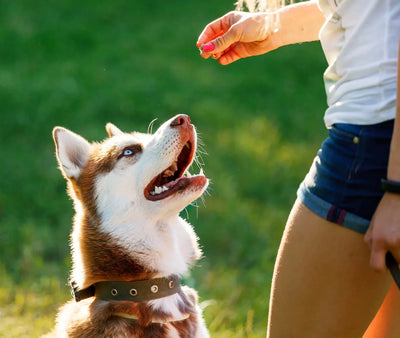Keeping your dog healthy and happy is every pet parent’s top priority. However, just like humans, dogs can have allergies too, which can make their lives uncomfortable and difficult. From food ingredients to environmental factors, there are several common causes of allergies in dogs. In this guide, we’ll discuss common dog allergies, how to recognize them, and steps you can take to avoid dog allergies and help manage symptoms if they do appear.
What Are Dog Allergies?
Allergies occur when a dog’s immune system overreacts to substances it views as harmful, even if they aren’t typically dangerous. These allergens can trigger a range of symptoms, from itchy skin and sneezing to digestive problems. Recognizing the symptoms and identifying the allergen are essential to making life easier for your dog.
Types of Dog Allergies
1. Food Allergies
Food allergies in dogs can be tricky to identify because the symptoms often overlap with other issues. They can develop at any age, and while dogs can be allergic to a wide variety of foods, some ingredients are more commonly associated with allergic reactions.
Common Food Allergens for Dogs:
- Beef
- Chicken
- Dairy
- Wheat
- Soy
- Eggs
Food allergies often manifest as itchy skin, ear infections, or digestive issues, like vomiting or diarrhea. It’s important to note that food allergies are different from food sensitivities, which may cause similar symptoms but don't involve the immune system.
2. Environmental Allergies
Environmental allergies are caused by substances your dog encounters in their everyday surroundings, such as pollen, dust mites, or mold. These allergies can be seasonal (like pollen) or year-round (like dust mites).
Common Environmental Allergens:
- Pollen from trees, grasses, and weeds
- Dust and dust mites
- Mold spores
- Household cleaning chemicals
- Certain fabrics or materials
Environmental allergies often cause skin reactions, such as itching, licking, and scratching, as well as sneezing or watery eyes.

3. Flea Allergy Dermatitis
Some dogs are highly allergic to flea saliva, leading to a condition called flea allergy dermatitis. Even a single flea bite can cause an intense allergic reaction, resulting in extreme itching, hair loss, and red, inflamed skin.
4. Contact Allergies
Contact allergies occur when a dog’s skin comes into contact with an allergen. They are typically less common but can still cause discomfort. Common sources of contact allergies include certain plants, chemicals in cleaning products, and materials in dog bedding or toys.
Identifying the Symptoms of Dog Allergies
Skin-Related Symptoms
- Persistent itching and scratching
- Red, inflamed skin
- Excessive licking, often focusing on paws or belly
- Hives or rash
- Hair loss or bald patches
Respiratory Symptoms
- Sneezing
- Watery eyes
- Runny nose
- Coughing or wheezing (though this is less common in dogs)
Digestive Symptoms
- Vomiting
- Diarrhea
- Gas or bloating
- Loss of appetite
How to Avoid Dog Allergies
The best way to manage dog allergies is through prevention. While some factors may be unavoidable, such as seasonal pollen, there are many strategies you can adopt to help your dog avoid allergens and reduce their symptoms.
1. Choose Limited-Ingredient Dog Foods
Since food allergies are often triggered by specific ingredients, a limited-ingredient diet can help. These dog foods contain fewer ingredients, reducing the likelihood of exposure to common allergens like beef, chicken, or wheat.
Tips for Avoiding Food Allergies:
- Look for dog foods that list one protein source (e.g., salmon or lamb) and avoid those with fillers or artificial additives.
- Consider switching to hypoallergenic dog food if your dog has a history of allergies.
- Avoid foods with artificial preservatives or flavors, which can irritate sensitive dogs.

2. Monitor and Control Fleas
Flea prevention is essential for dogs with flea allergies. Even if your dog doesn’t have a known flea allergy, flea control is important for their overall health.
Steps to Avoid Flea Allergies:
- Use veterinarian-approved flea prevention products.
- Regularly clean and vacuum your home to minimize flea populations.
- Wash your dog’s bedding frequently in hot water to kill any flea eggs.
3. Limit Exposure to Environmental Allergens
Reducing your dog’s exposure to pollen, dust, and mold can greatly improve their quality of life, especially during allergy season.
Reducing Environmental Allergies:
- Keep windows closed during high-pollen seasons and use air purifiers.
- Wipe your dog’s paws and coat after outdoor walks to remove any pollen or dust.
- Use non-toxic, pet-friendly cleaning products to minimize chemical exposure.
4. Choose Hypoallergenic Dog Treats and Bedding
Choosing hypoallergenic dog products, including treats, toys, and bedding, can help reduce potential allergens.
Tips for Hypoallergenic Products:
- Look for single-ingredient or low-ingredient dog treats that avoid common allergens.
- Use bedding and toys made from natural, chemical-free materials.
- Avoid synthetic fragrances in dog shampoos and grooming products, as they can irritate sensitive skin.
When to Seek Veterinary Help
Some allergic reactions can become severe, leading to symptoms such as swelling, difficulty breathing, or even anaphylactic shock. If you notice any of these symptoms, seek immediate veterinary care. For ongoing symptoms that affect your dog’s quality of life, working with a veterinarian can help you find a sustainable allergy management plan.
Helping Your Dog Live Comfortably with Allergies
Dog allergies can be a challenge, but with the right approach, you can minimize your dog’s exposure to allergens and help them feel comfortable and itch-free. From adjusting their diet to using hypoallergenic products and maintaining good hygiene, a few proactive steps can make a world of difference. By recognizing the signs early and taking preventative action, you can help your furry friend avoid dog allergies and enjoy a happier, healthier life.






